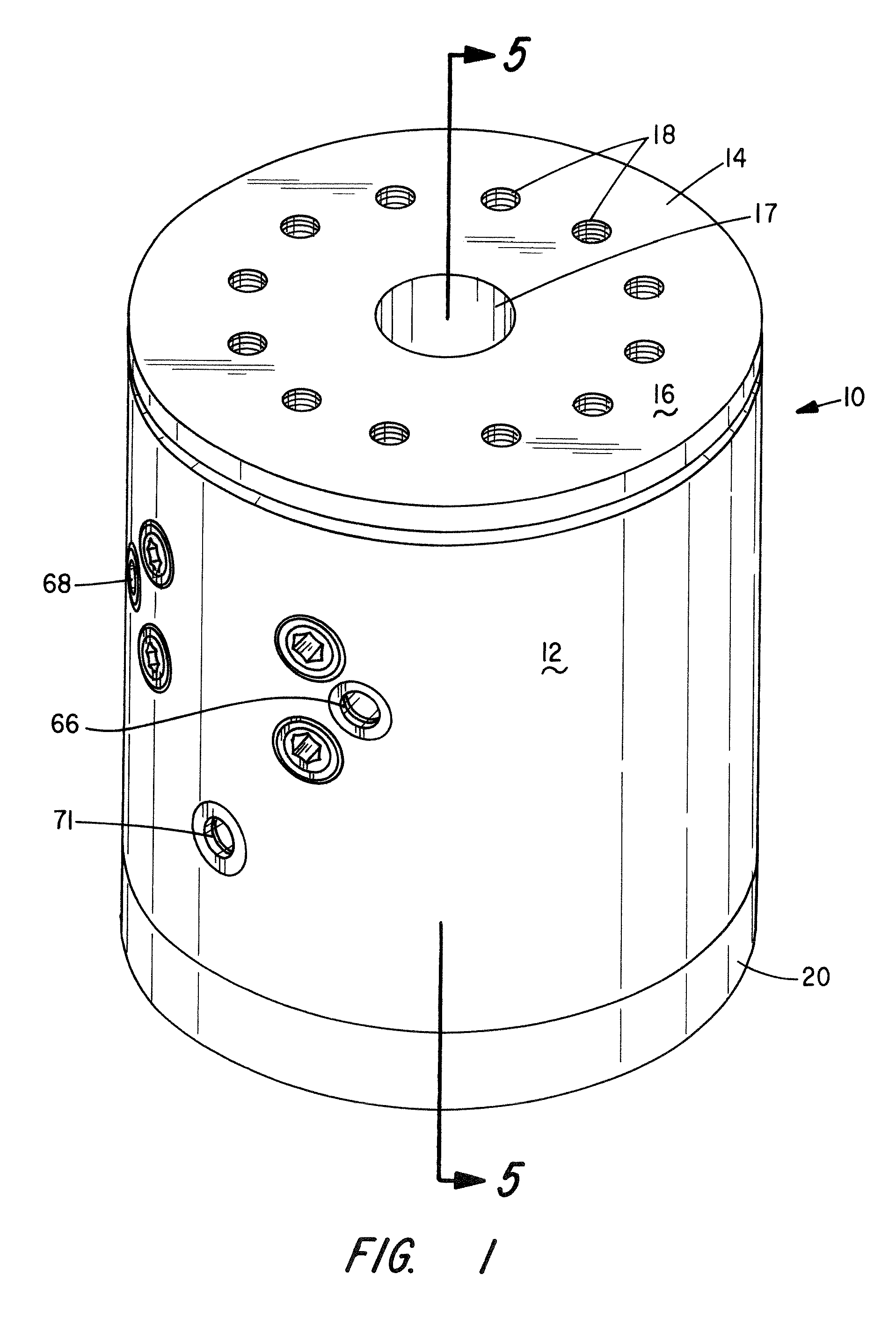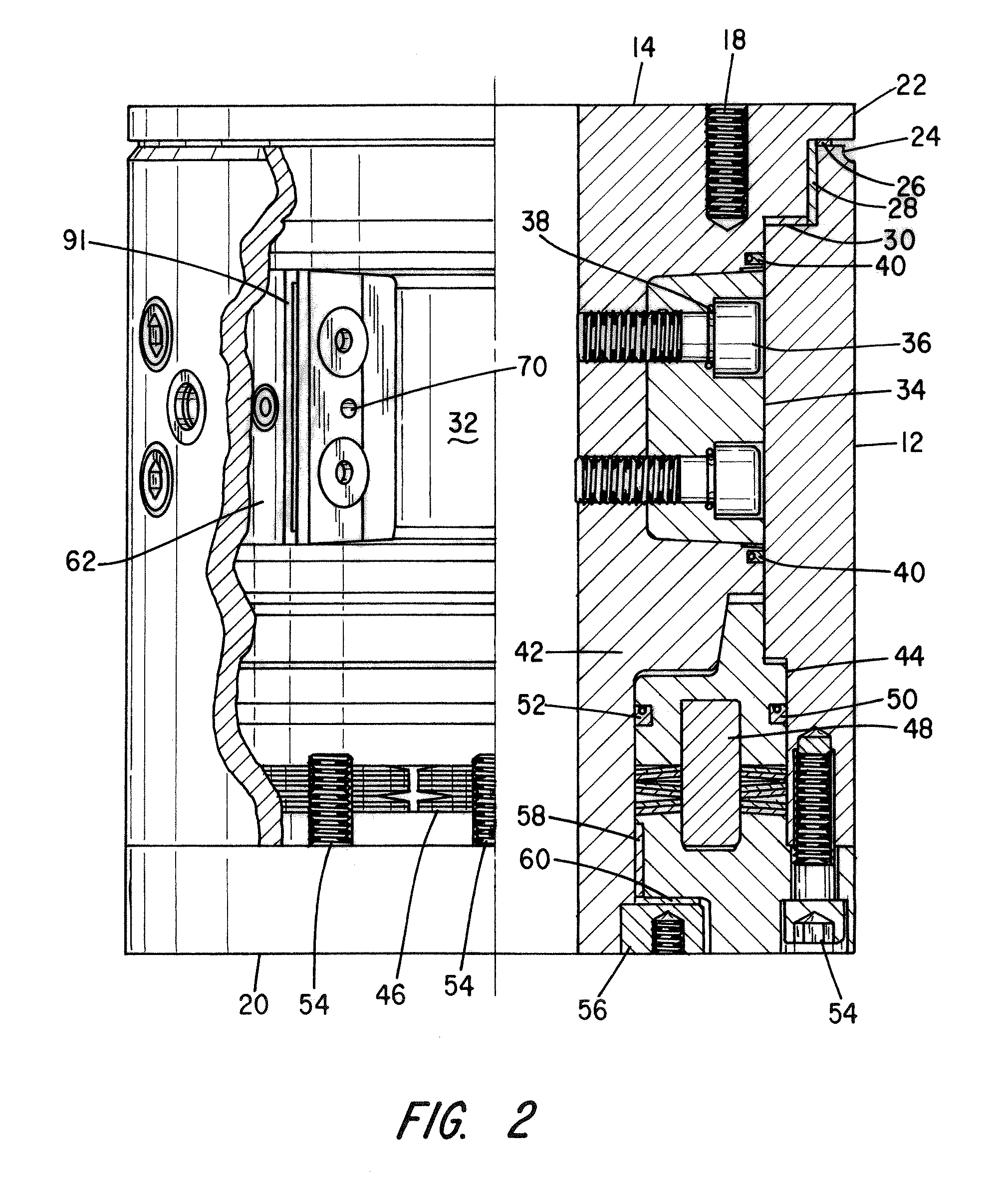Rotary actuator with internal brake mechanism
a rotary actuator and internal brake technology, applied in the direction of rotary or oscillating piston engines, machines/engines, rotary piston engines, etc., can solve the problems of rotor drift, difficult to prevent leakage across the vane and along the shaft, and reduce the inherent leakage. , the effect of preventing external leakag
- Summary
- Abstract
- Description
- Claims
- Application Information
AI Technical Summary
Benefits of technology
Problems solved by technology
Method used
Image
Examples
Embodiment Construction
[0019]Referring first to FIG. 1, there is shown a perspective view of the rotary actuator assembly comprising a preferred embodiment of the present invention. It is indicated generally by numeral 10 and is seen to comprise a generally cylindrical housing 12 in which is journaled a spool member 14. That is to say, the spool member 14 is rotationally mounted within the housing 12, and visible on the upper surface 16 of the spool member is a central bore 17 and a plurality of threaded bores 18 arranged in a circular pattern by which the actuator assembly can be attached to one of a frame or load. The central bore 17 reduces the weight of the structure when foot mounted and also allows straddle mounting by inserting a support shaft through this bore. In the case of straddle mounting, the housing 12 is equipped with mounting feet (not shown) to secure it to a stationary member.
[0020]Bolted to the lower edge of the housing 12 is a cap member 20 and it, too, includes a pattern of threaded ...
PUM
 Login to View More
Login to View More Abstract
Description
Claims
Application Information
 Login to View More
Login to View More - R&D
- Intellectual Property
- Life Sciences
- Materials
- Tech Scout
- Unparalleled Data Quality
- Higher Quality Content
- 60% Fewer Hallucinations
Browse by: Latest US Patents, China's latest patents, Technical Efficacy Thesaurus, Application Domain, Technology Topic, Popular Technical Reports.
© 2025 PatSnap. All rights reserved.Legal|Privacy policy|Modern Slavery Act Transparency Statement|Sitemap|About US| Contact US: help@patsnap.com



